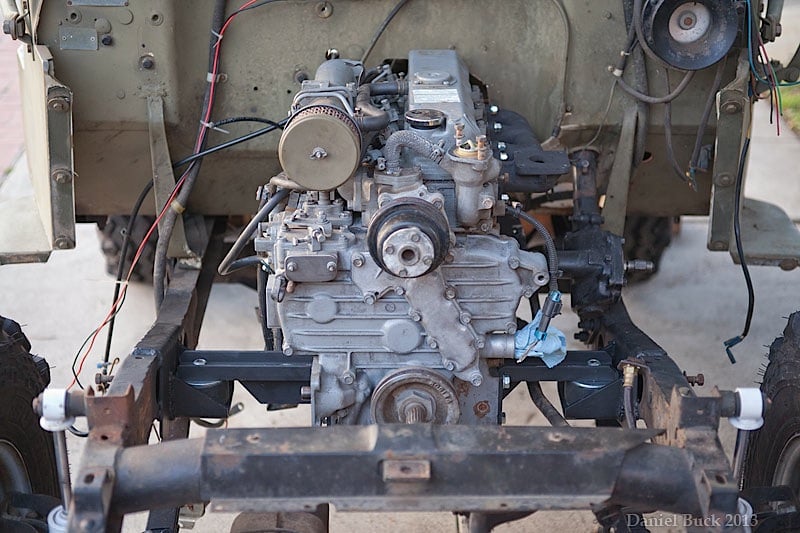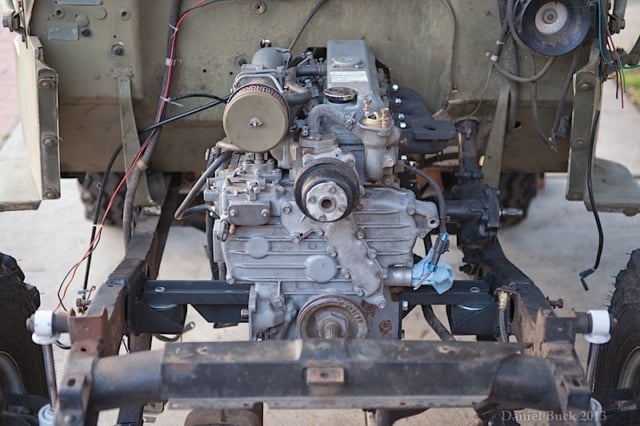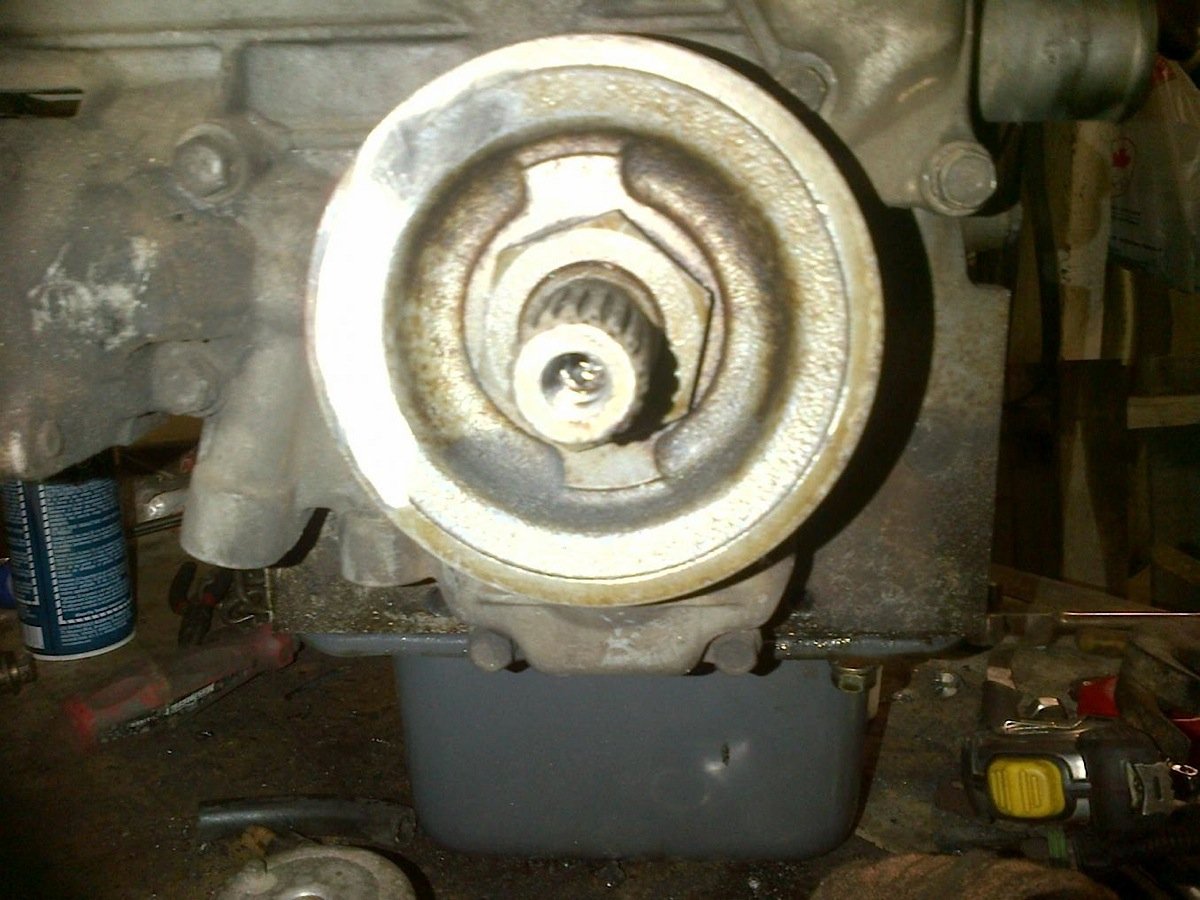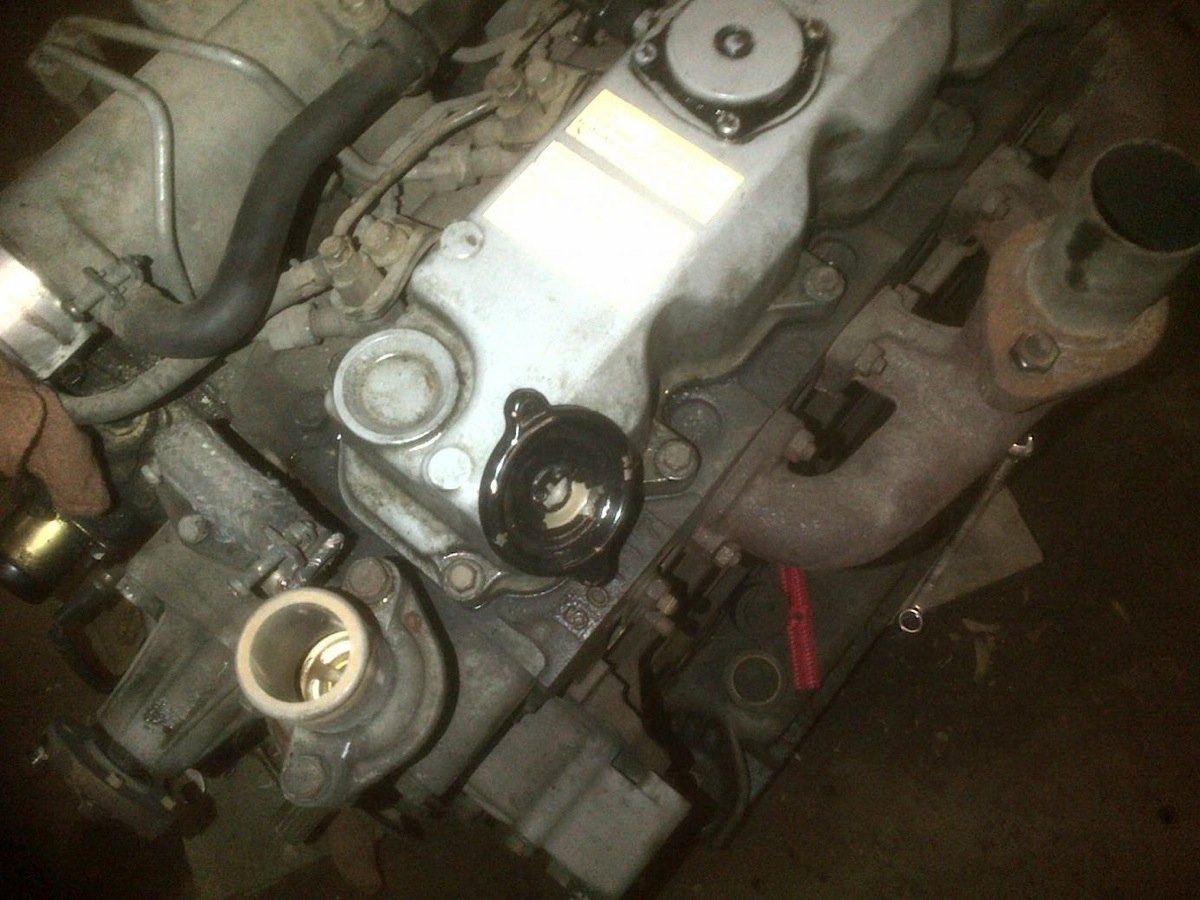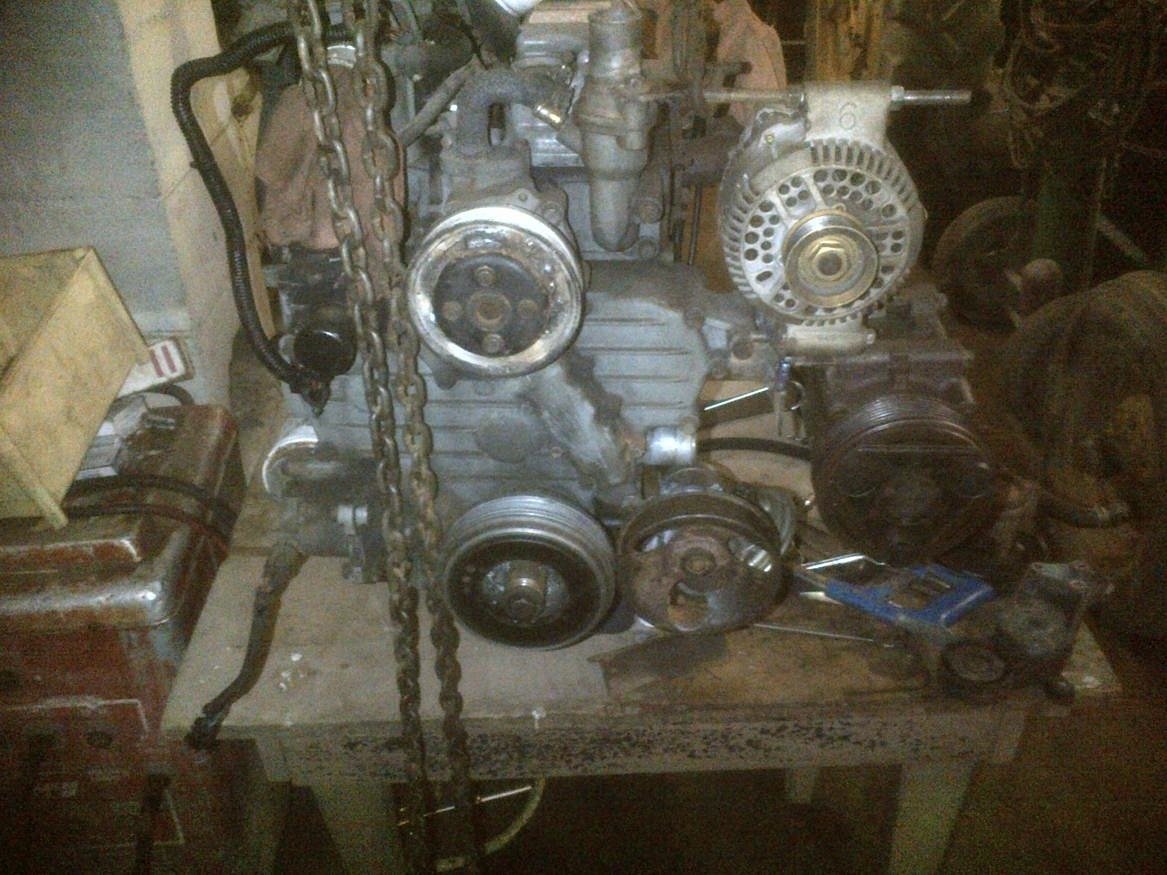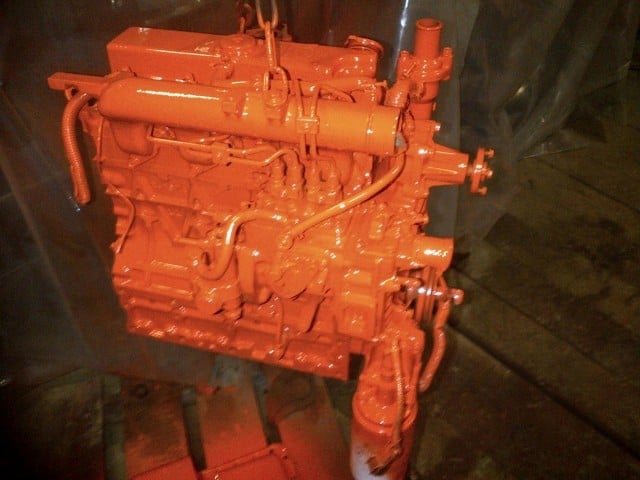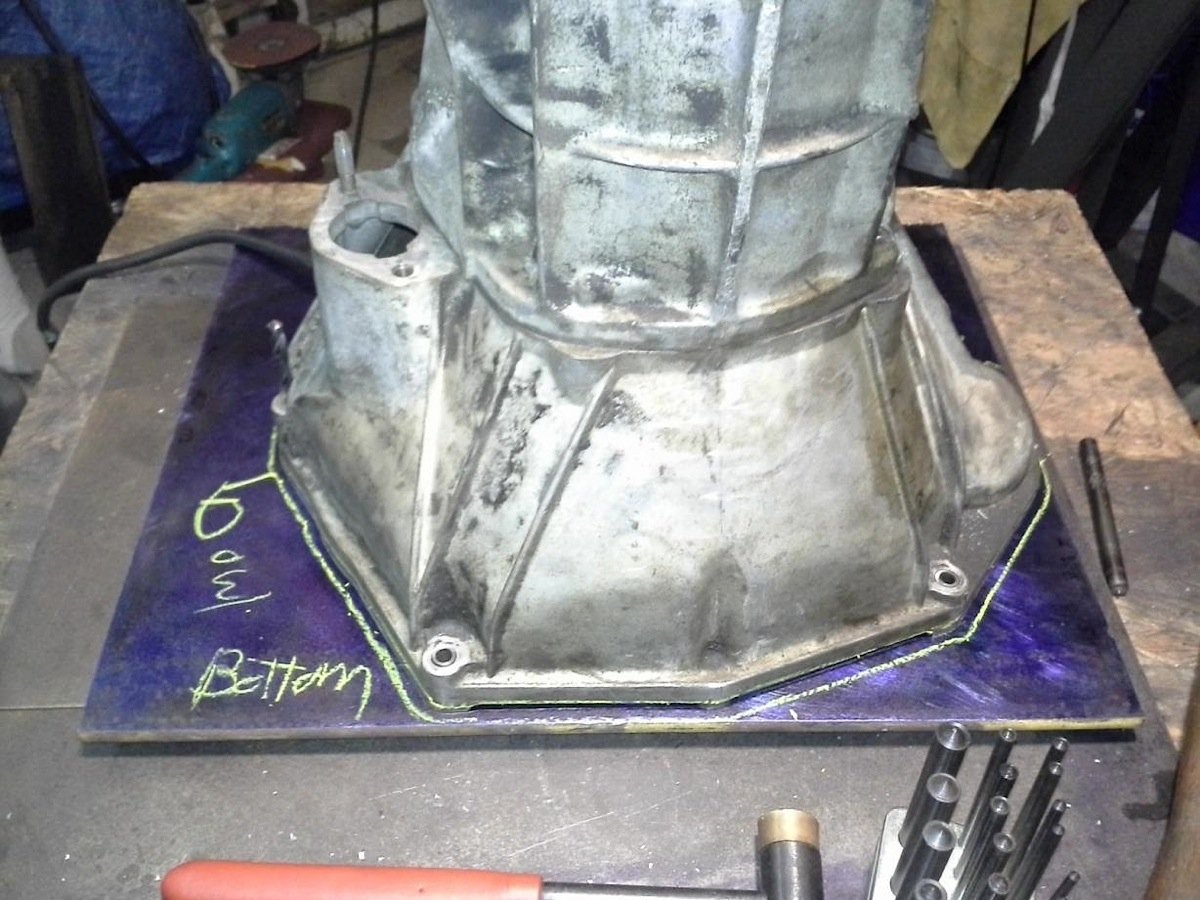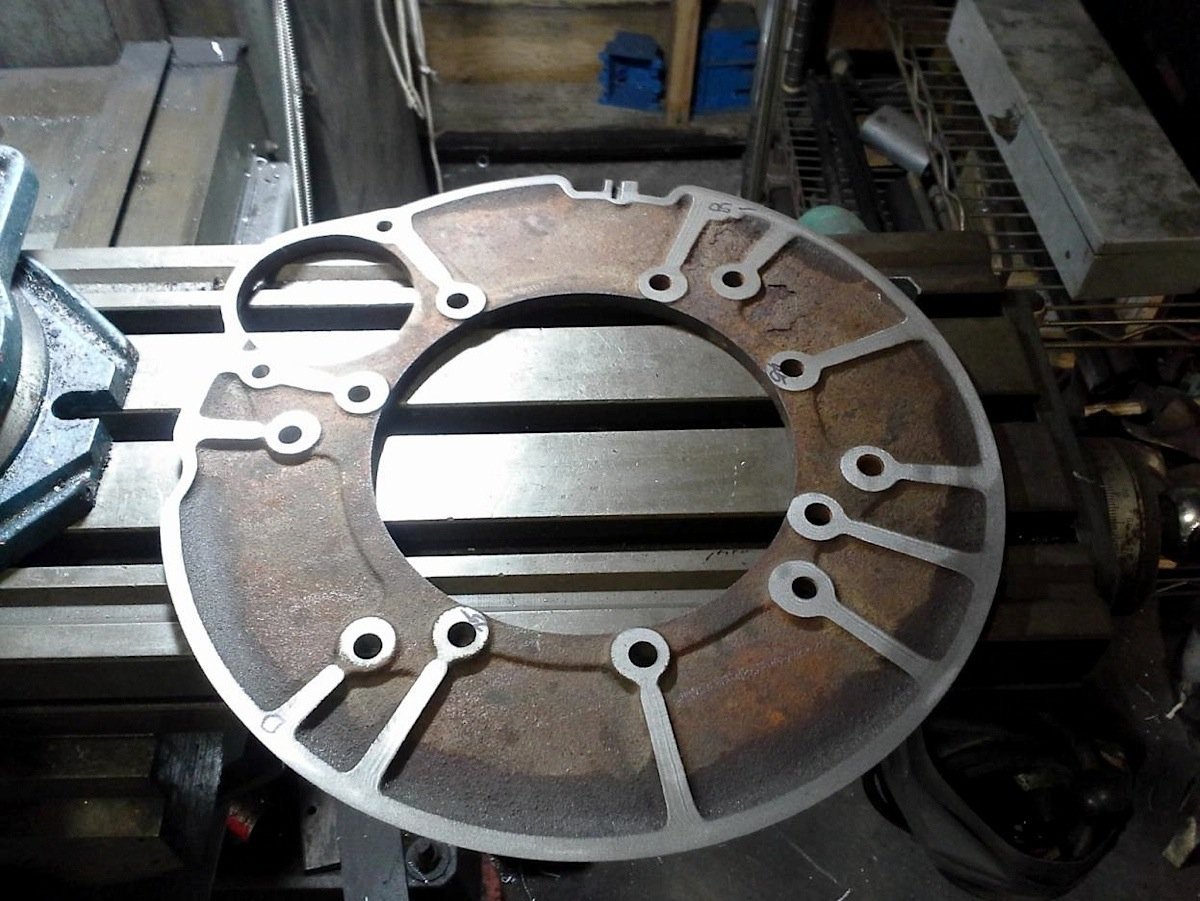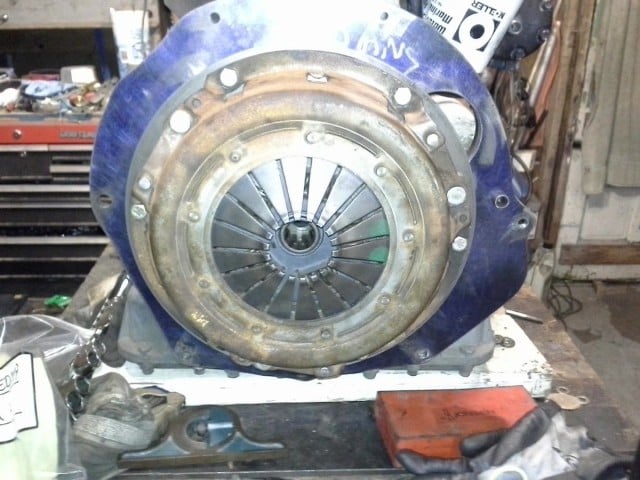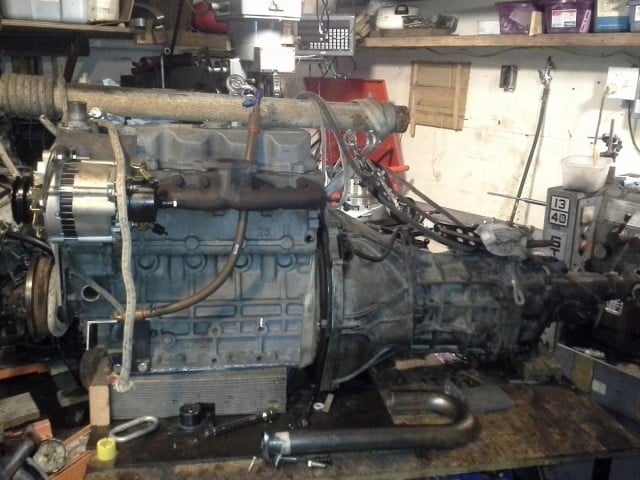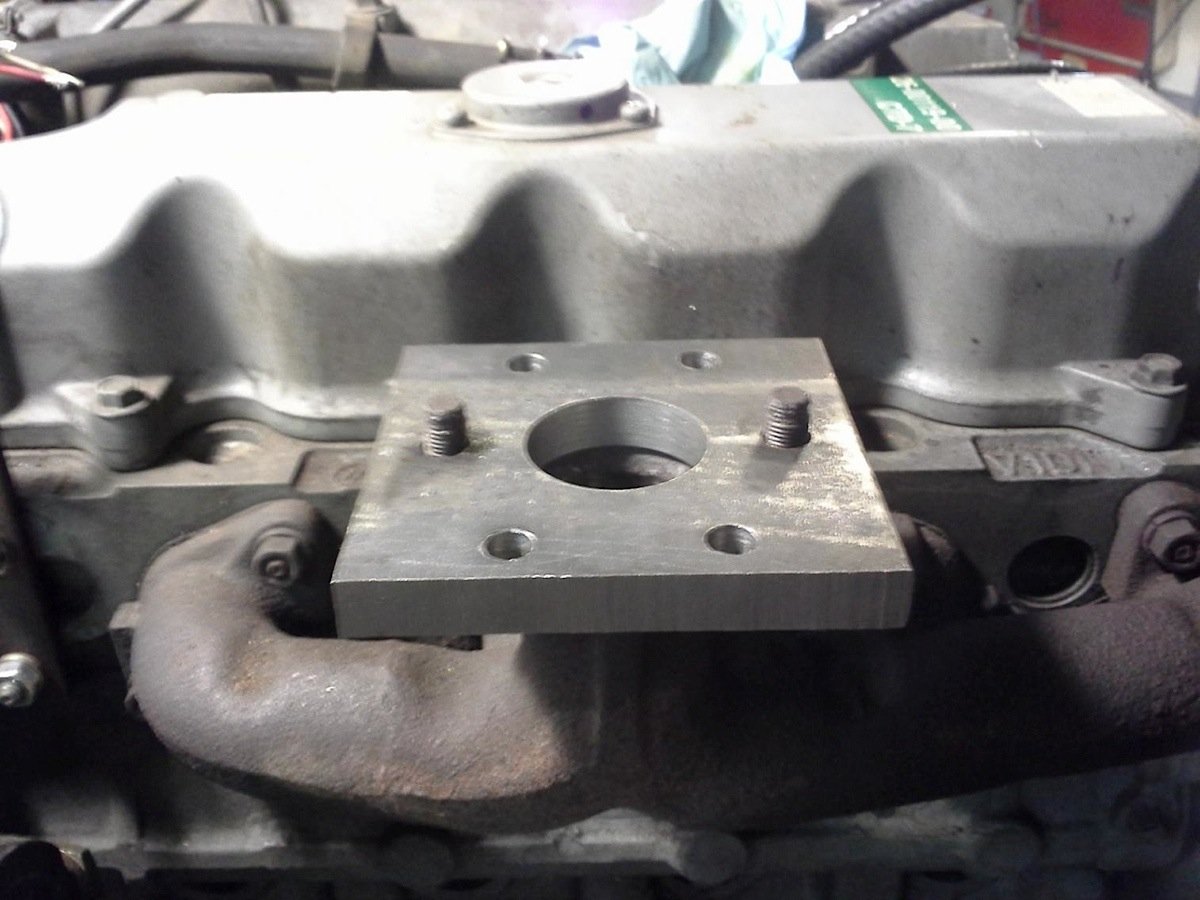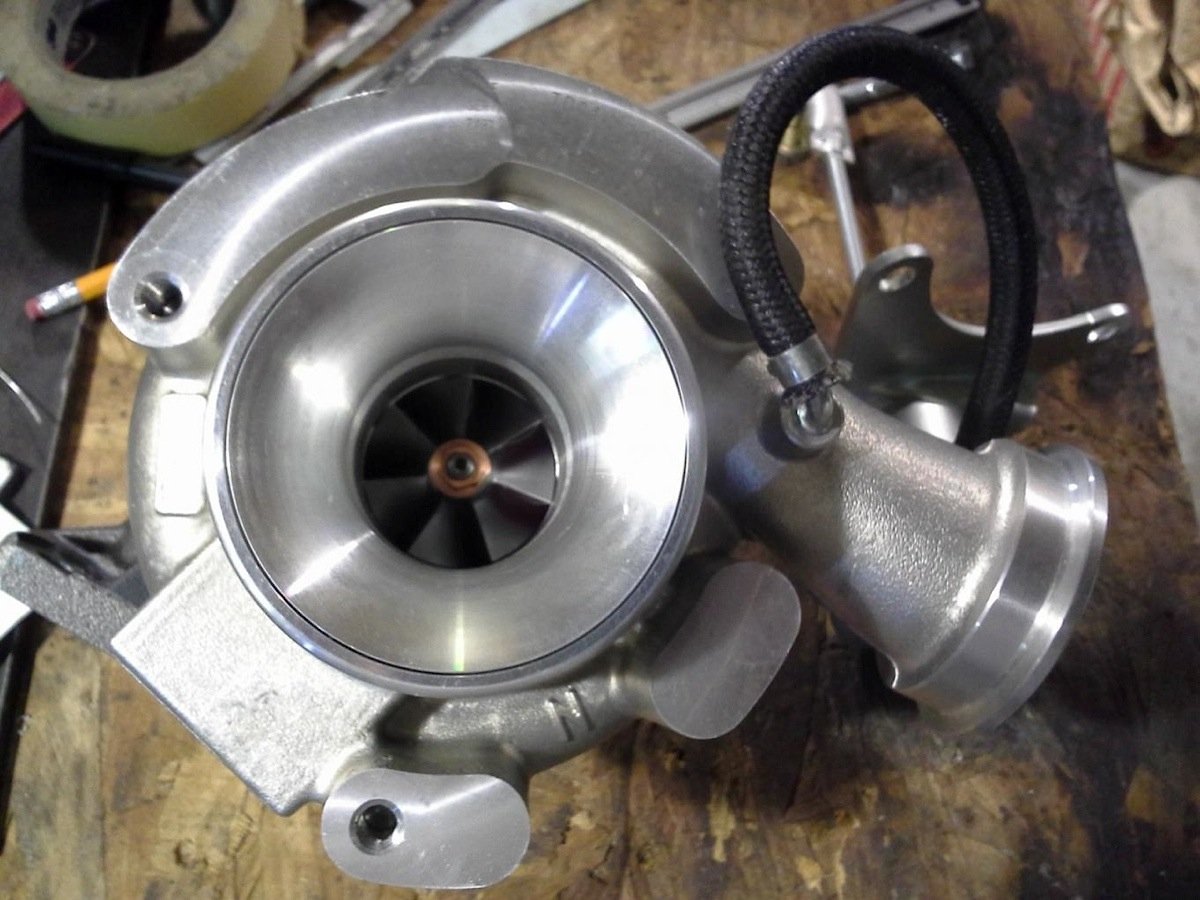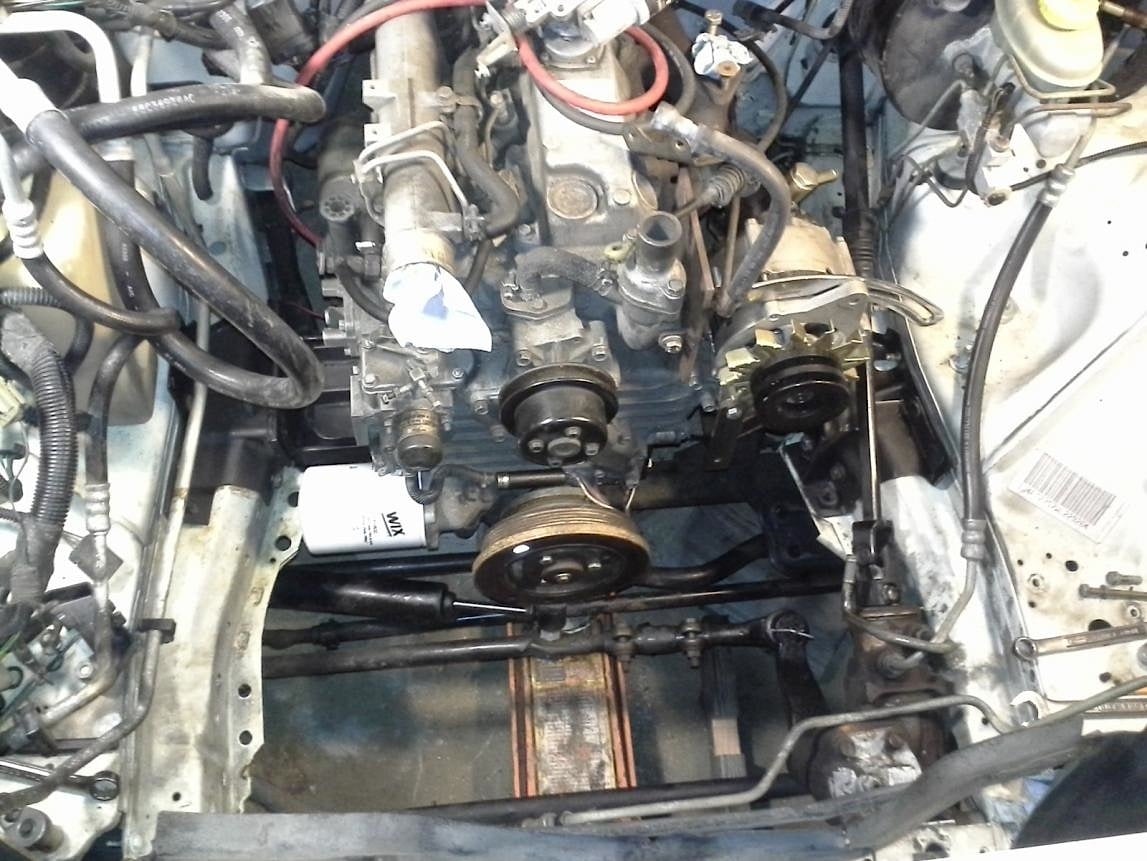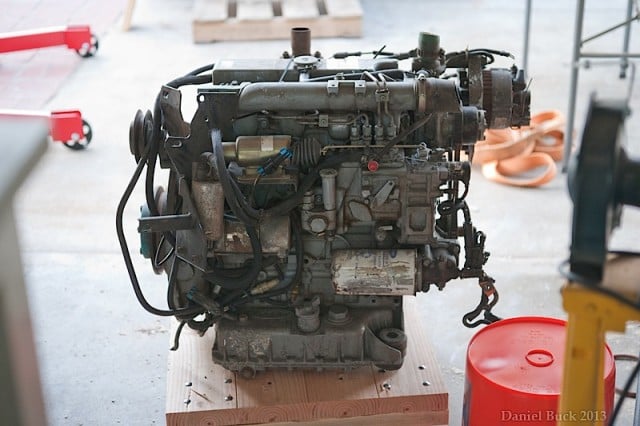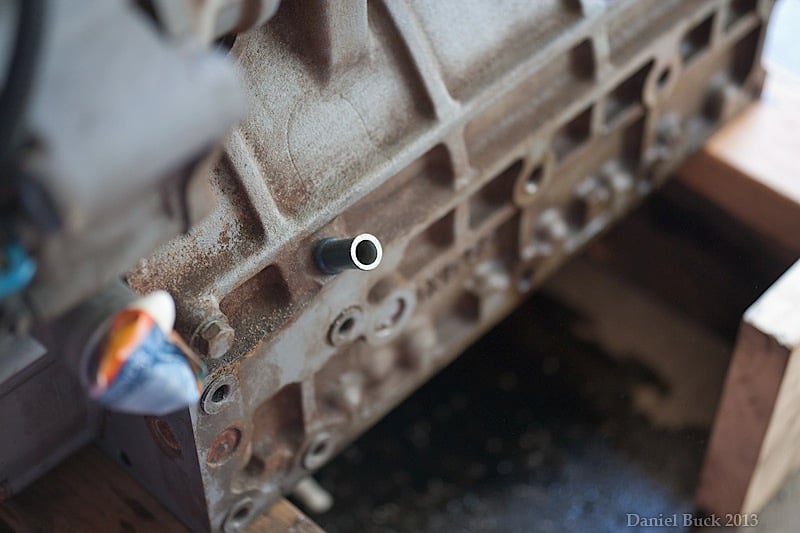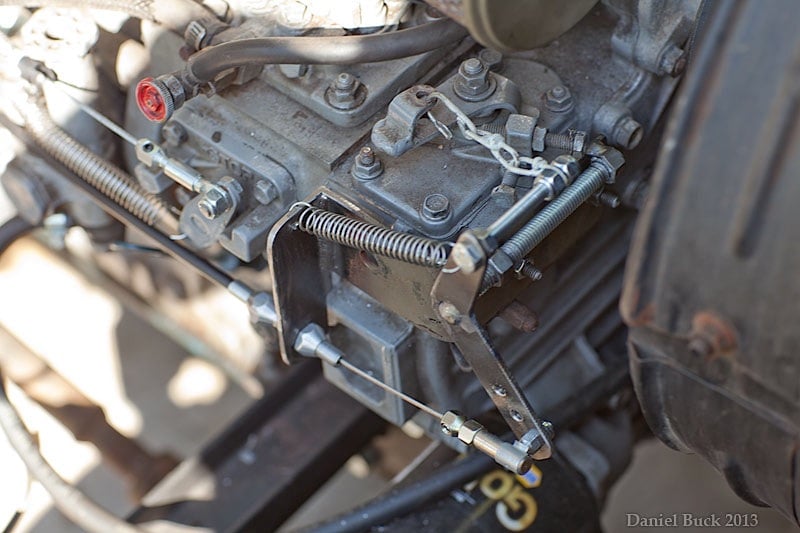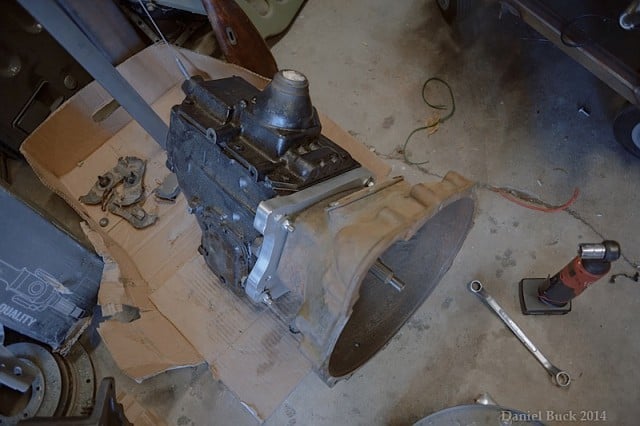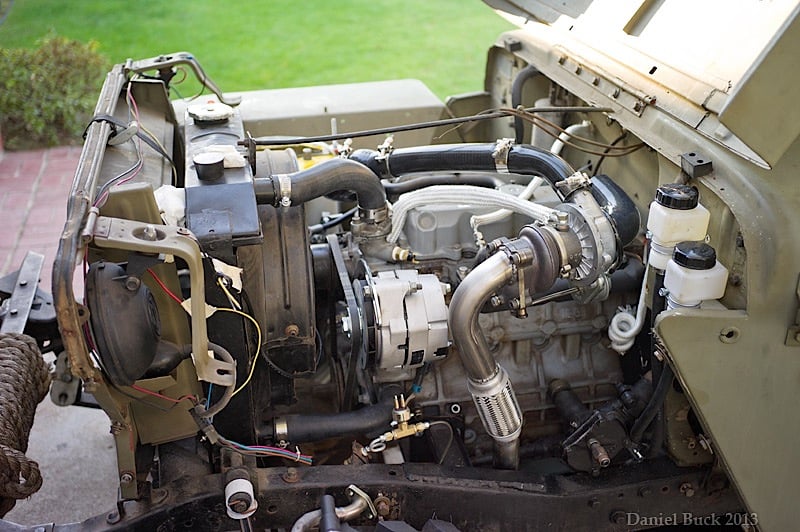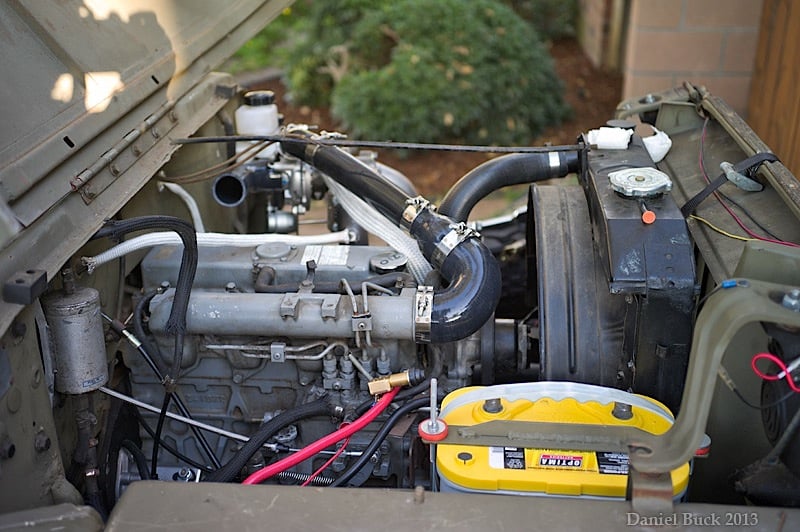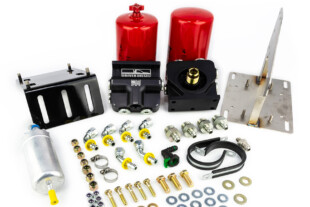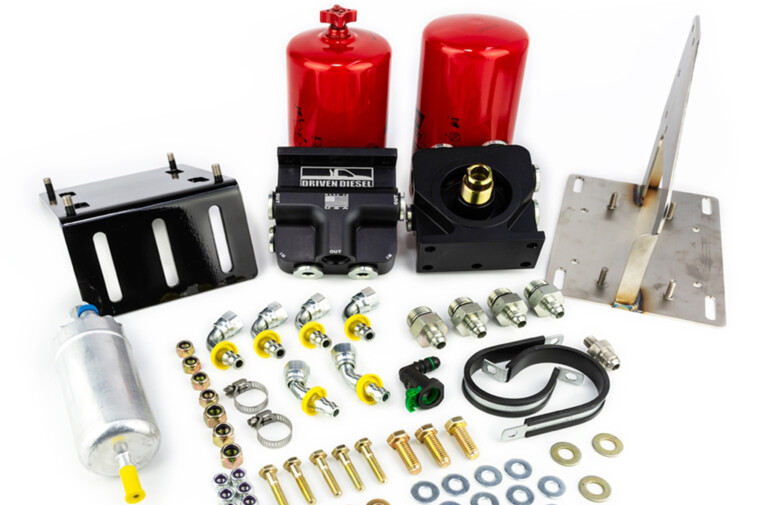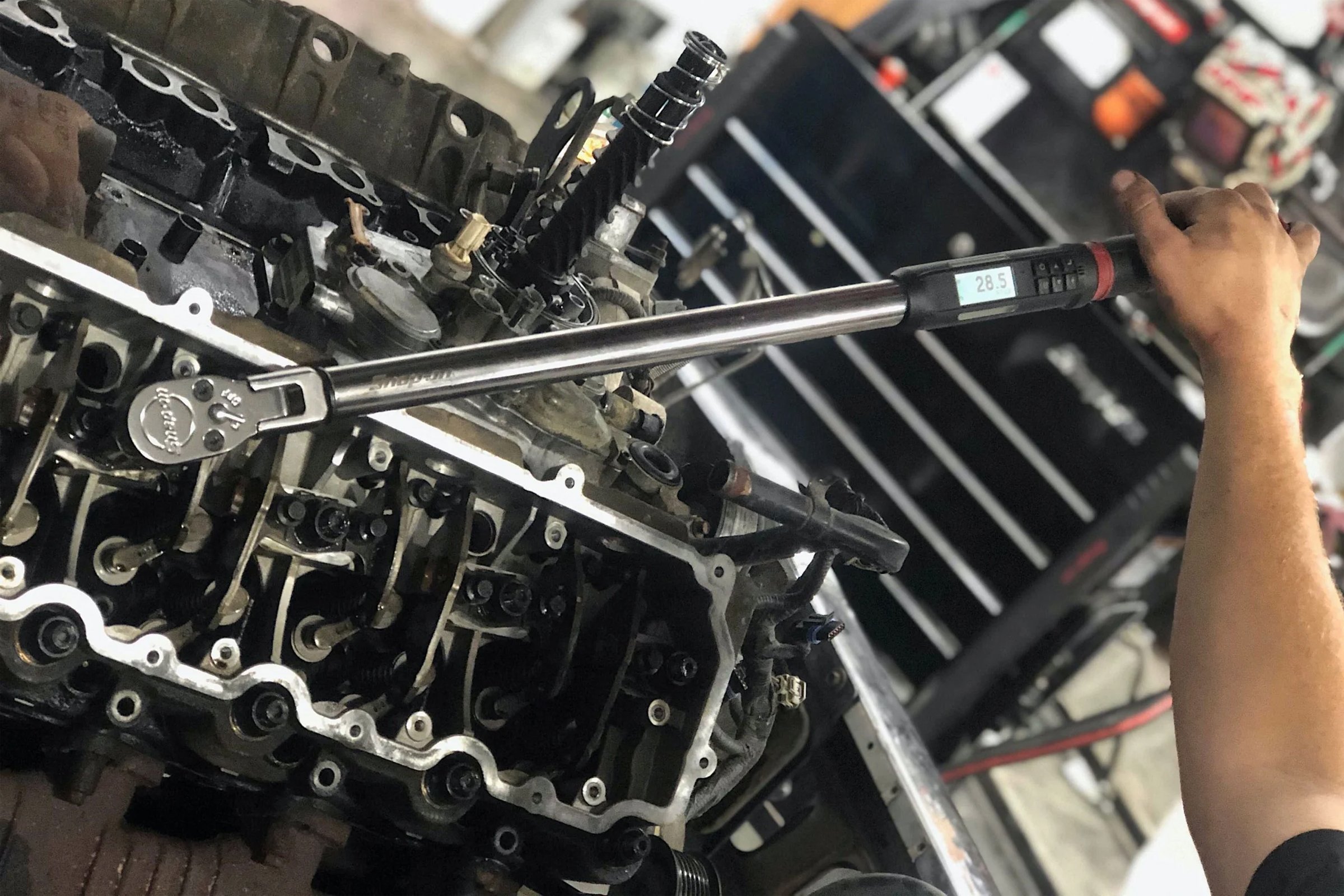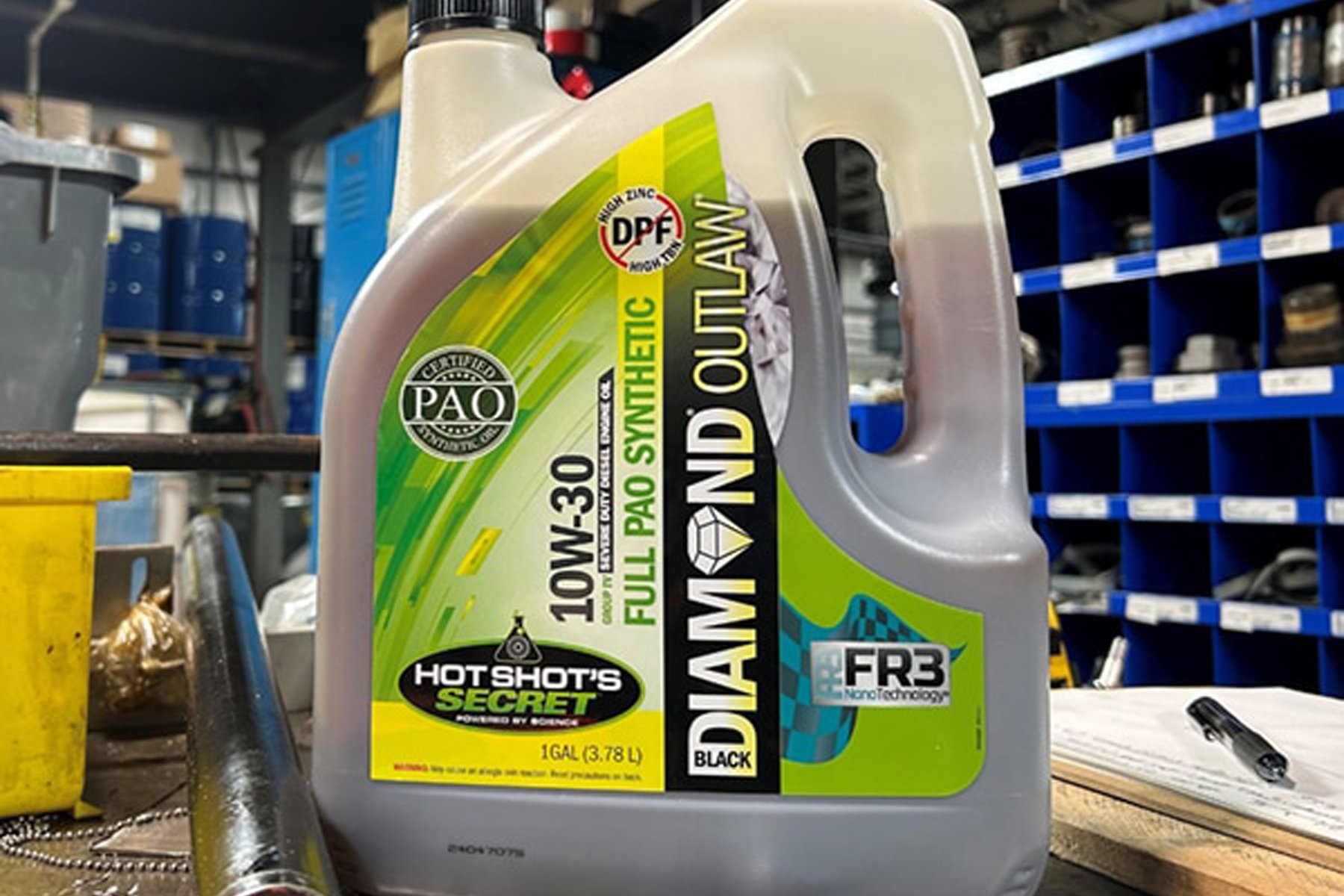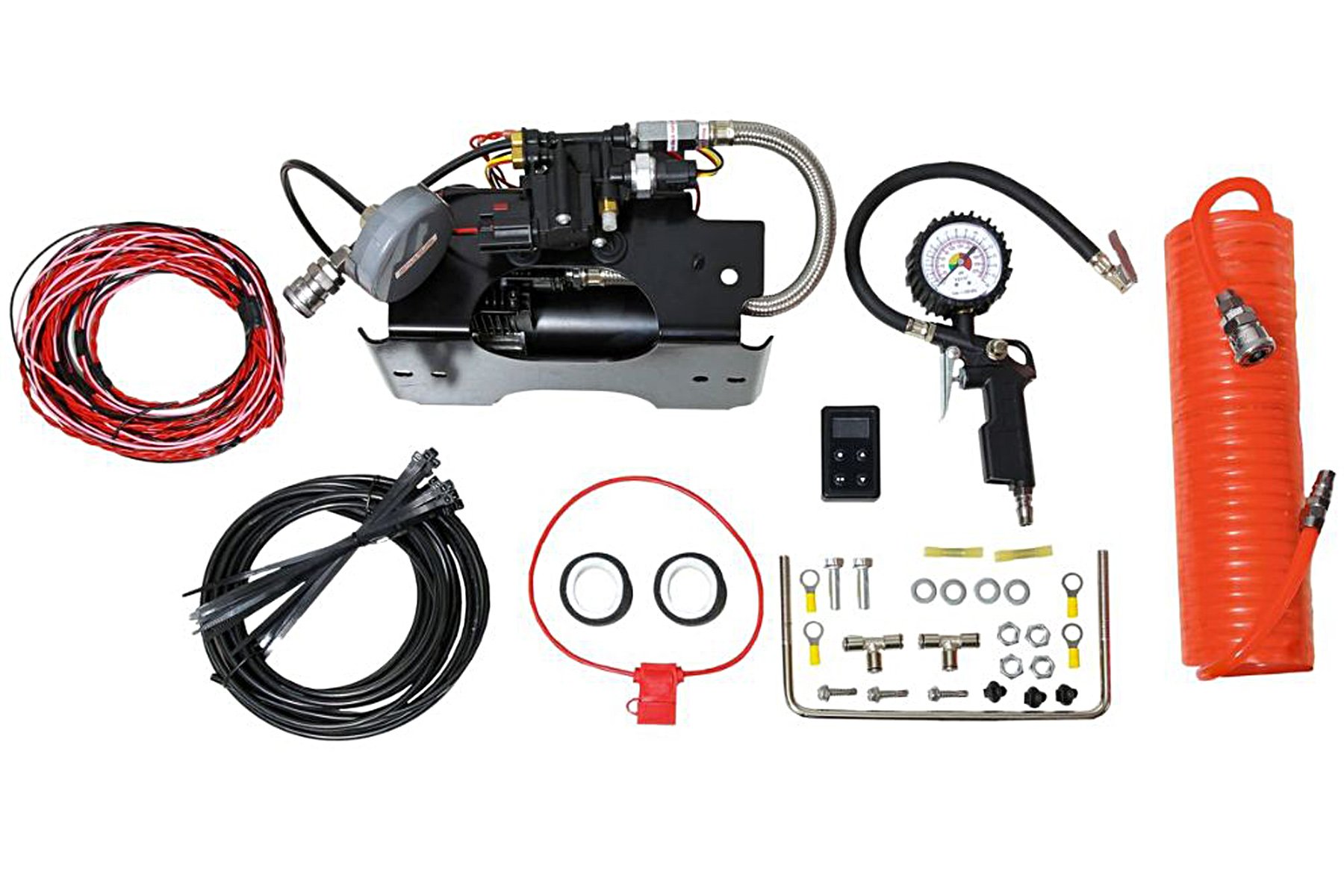Diesel swaps are becoming more common every day. The advantages are obvious to anyone who understands the basics of automotive technology. Diesels are more robust, produce more low-end torque, and offer higher fuel mileage than comparably sized gasoline (or petrol, as they call it every else but here in the USA) engines. So what’s to think about?
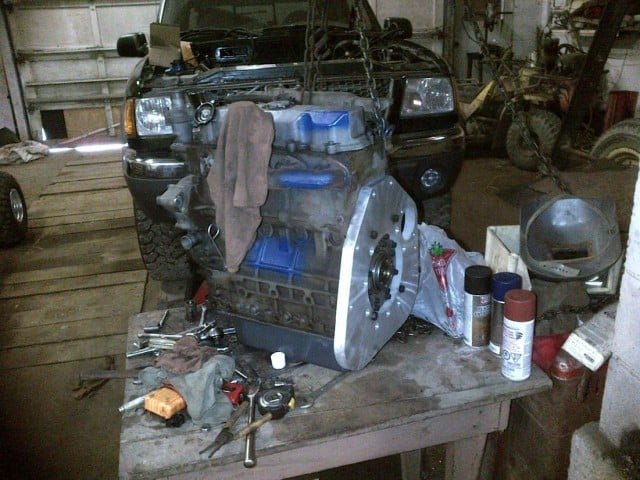
DetriotDiesel’s Ranger conversion was made a little easier with a bellhousing adapter found through a fellow Diesel Bombers forum member.
Well, first of all, most diesel swaps are not easy. In addition to that, depending on where you live, a diesel swap may make the truck difficult to get registered.
There are a few options. One of the more common is the Cummins 4BT (a four-cylinder variant of the 6BT found in Ram trucks) that has been successfully swapped into a wide range of vehicles. We have also been hearing good things about Kubota diesel swaps.
We spent some time scanning the diesel forums and found three guys who had done a Kubota diesel engine swap into various vehicles (one a 2001 Ford Ranger 4×4, another a Jeep Cherokee, and the third an old Willys Jeep). To get the low down this Kubota diesel engine, we contacted them about their experiences. There’s far too much involved to completely cover here, and for more details we suggest you check into the diesel forums, but we’ll try to give you the highlights so you can decide if this is an engine swap you are interested in doing.
Kubota Facts
My most important piece of advice would be to take lots of measurements. – Dieselxj
The V2203DI is an inline four-cylinder, four-stroke diesel with a displacement of 2,197 cc (134 cubic inches), and depending on the model number, has a bhp rating of between 30 and 36 at around 2,000 rpm. Doesn’t sound like much, huh? But they can be turbocharged (as in the applications we’ll review below) and make much more power and continue offering outstanding fuel mileage figures. They weigh right around 400 pounds (roughly half of a 4BT), and have a 20.5:1 compression ratio.
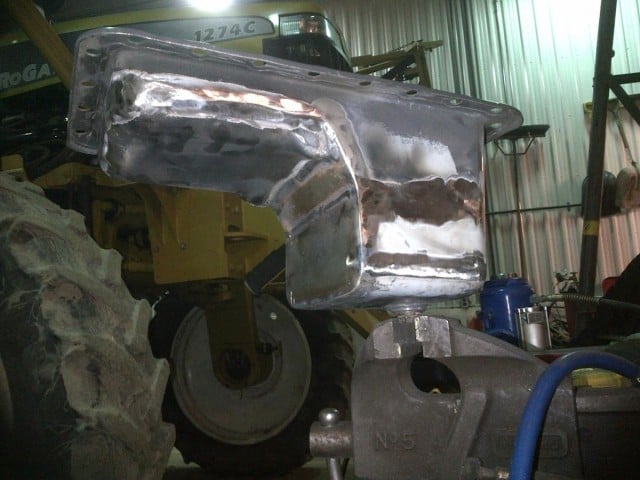
A bite from the middle and front had to be cut from a Kubota oil pan meant for a Bobcat to clear the Ranger’s front axle.
Diesel Ranger
Our first source had some experience working on the Kubota and knew it to be a reliable engine. When Diesel Bombers forum member DetriotDiesel decided to do an engine swap, selecting the enegine was an easy choice. Before he started, he read every online forum about swapping these engines that he could find. His truck was a 2001 Ford Ranger 4×4 with 4.0-liter backed by a M50D-R1 HD manual trans. He pulled out the engine, then stripped the wiring harness down to just what he needed to make the new engine start, run, and make the gauges work.
Then he took measurements on the engine for the flywheel depth (the rear of the engine to the flywheel face), diameter of the flywheel, inside diameter of the flywheel face, and the pilot bearing hole. Factoring in the one-inch adapter plate, he was able to calculate how much to take off the flywheel so it would fit in the bell housing and have the proper depth for the throw-out bearing. He took the flywheel to a local engine shop to have it machined.
DetroitDiesel drilled and tapped the Kubota's crank end (left) to accept a new pulley. He also had to make an oil fill port (center with cap on) in the Kubota's valve cover. His engine support components and pulleys for the Ranger swap are seen mocked up (right) before being fixed in place. When finished, DetroitDiesel coated his engine (below) in Kubota Orange.
There were plenty of small challenges along the way. Some of those were modifying the Kubota valve cover to create an oil filler once the Carrier pancake style oil pan was removed; taking a power steering pump, harmonic balancer, and a crank pulley from a 1.9 VW TDI and modifying those to fit on the Kubota; mounting the Ford alternator and Ford A/C compressor to the new engine; and transplanting a vacuum pump from a 6.5L GM turbodiesel engine to run the heater controls and the brake booster.
DetroitDiesel also had to drill a hole in the block on the driver’s side for an oil dipstick. He then used a Kubota oil pan meant for a Bobcat, cut the sump in half and took a chunk out of the front half so it would not contact the front axle of his 4×4 Ranger. He ended up with a shallow pan up front and nice deep sump in the rear so he could keep up a good oil capacity. By then, the adapter plate for the engine that fellow DieselBomber forum member Gaines12 had designed (and was selling) arrived.
Dieselxj designed a bellhousing adapter plate (left) for his Cherokee conversion. He also drilled and tapped (right) new holes in the fly wheel to make it fit. Below is a photo of the pressure plate bolted up to the fly wheel, with the custom bellhousing adapter installed
A KO3 turbocharger from a VW 1.8 was bolted to the exhaust manifold using an adapter. He made his own exhaust, and custom fabricated the air inlet using a flange-style filter mounted in the stock location. A custom intercooler was mounted behind the grille. Throttle control was another issue that he solved by creating an adapter to reverse the action of the Kubota throttle lever, which pushed forward to make the engine run faster.
Overall, DetroitDiesel said he was happy with the transplant. He reports 40 mpg in a lifted truck with 33-inch tires. He gets lots of looks, especially when he is at the gas station filling it with diesel. It has more than 5,000 miles on it since the swap, and although there have been little problems, it wasn’t anything he couldn’t fix easily. For all the details on this build, check out DetroitDiesel’s string on the DieselBombers forum.
The Kubota engine and the Cherokee transmission (above) finally met. The turbo adapter mount (below left) that Dieselxj made for the Kubota's manifold, and the Mitsubishi turbo (below right) he went with for his swap.
Cherokee Swap
Dieselxj is also a member of the DieselBombers forum, and he swapped a Kubota V2203DI into his 1994 Jeep Cherokee XJ. He told us that the Kubota conversion was a pretty involved process, and required quite a bit of fabrication. Dieselxj said, “If you can find a Kubota shop that is willing to spend some time with you (he found a great source at Parts-Barn), it will make the job easier. You can also get parts from Kubota. However, officially the engine is a Carrier, so a lot of Kubota shops don’t want to help. Most of these engines start off as a bare engine.”
“I fabricated or had made for me many components such as the engine to transmission adapter; a modified flywheel to fit the clutch, pressure plate and pilot bearing; and all the engine accessory mounts needed, including those for the power steering, air conditioning, alternator, and vacuum pump. I also had to do exhaust manifold modifications and a custom exhaust to accept the turbocharger, intake/intercooler plumbing, engine and transmission mounts, oil pan modification, engine stop and start controls, and the engine monitoring and instrumentation,” explained DieselXJ.
The engine and trans installed (left) in the Cherokee (look at all that room) after fabricating motor mounts. Dieselxj's intercooler setup (right) works well for him.
“My most important piece of advice would be to take lots of measurements. The most important being the exact distance from the face or clutch side of the OE recipient flywheel to the mating surface where the engine meets the transmission on the recipient vehicle. This measurement, with the flywheel thickness, is used to make the transmission-to-engine adapter depth right so the clutch will work correctly or a torque converter will seat in the transmission pump correctly. You also need to measure and check clearances where you intend to mount the engine, to see where the engine mounts will go, and if any oil pan modifications will be necessary,” continued DieselXJ.
We saw many turbochargers tried on the Kubota on several different conversions. Dieselxj told us, “I didn’t try to reinvent the wheel. I took advice from people who had completed successful conversions. I went with a new OE turbo (Mitsubishi TD04L-10KYRC-5) for a stationary 3.3L Cummins. The correct turbo can make or break your conversion. If you want to be a turbo trailblazer be sure to monitor your EGT’s and boost during your test runs. A few folks have melted down a Kubota with too high an EGT. My turbo has the wastegate set at 22-23 psi, and that has been working well for me.”
DieselXJ also told us, “The little Kubota has a pretty narrow powerband. It pulls best from 1500 to 2250 rpm, and it will pull all the way to 3000+ rpm, but the torque peaks down low, and the engine is most happy around 2000 rpm. You need to pick your tire sizes and axle ratio to suit your needs. I run a pretty stock size tire, and a 3.07:1 ring and pinion. This is getting me about 36-38 mpg on the highway at 65 mph, and never under 33 mpg in the city.”
Daniel_Buck drilled out the turbo drain and used that hole to install a dipstick (left) for the Kubota. He solved the throttle control problem by designing a bracket, cable, and spring system (right) that reversed the action of the stock Kubota setup.
Crankin’ CJ2A
We also touched base with The CJ2A Page forum member Daniel_Buck, who said, “The neat thing about the Kubota V2203DI diesel is that it’s all mechanical. The only part of the motor that needs electricity to run is the starter motor. There’s no computer, and the fuel pump and fuel injectors are mechanical. I took out the original 10-gallon fuel tank and put in a 15-gallon fuel cell. The Kubota V2203DI fuel pump had no problem pulling the fuel from the cell, so there was no need for an electric pump. I got a lot of advice, and some parts, such as the engine adapter, from Overland Diesel.”
“The Kubota runs so cool that the electric fan hardly ever turns on, and it has only turned on when I was going up a very steep and windy mountain road. The sensor for the electric fan is set to turn on at 185 degrees F. I don’t know if that’s because the original Willys radiator is oversized for this motor, or if the motor just runs cool by design. There’s no intercooler on the turbo, and for the power output I am getting, I have no plan at this time to add one,” Daniel_Buck said.
Daniel_Buck continued, “Because I was doing a lot of things at once, adjusting the suspension, rebuilding the Ross steering box, replacing the brakes and the master cylinder, and putting in new brake lines, a new fuel system, new electrical system, and so on, the hardest part of the entire project was to just keep going. I kept getting overwhelmed by the list of tasks and parts. At times I would look at the pile of parts and not know where to start. After a while, I just told myself, ‘Just do at least one thing every time you have some free time, even if it’s just something very simple.’ I realized that the best strategy to any project of this size is to just get something done day by day, and knock it off the list.”
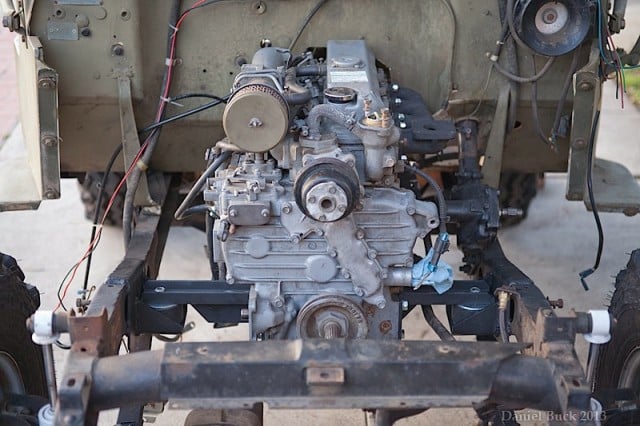
Custom motor mounts were made for the Kubota, and it fit with room to spare between the frame rails of the CJ2A.
Get ‘er Done
All three of the guys we talked to who had successfully completed swapping the Kubota V2202DI diesel engine into their vehicle told us basically the same thing. The most important key to their success was just plugging away at the job every chance they had, no matter how small the progress seemed that day. All of them stressed the importance of taking it one step at a time, good planning, lots of research, careful work, and not letting themselves become discouraged at the size of the job, keeping in mind the goal that one day soon they would be able to enjoy their new diesel-powered rig.
All of them are very happy with the results, and are more than satisfied with the power, and especially enjoy the increased fuel mileage the little four-stroke Kubota’s offer. If you’re interested in a Kubota V2203DI diesel engine swap, our best advice is to connect with as many people who have done or are doing the same job. Everyone we talked to said that they had received lots of good advice from others, and were more than happy to offer their experiences. Good luck, and let us see how your diesel engine swap is going.
These photos (above) from both sides of the Kubota V2203DI that Daniel_Buck installed in his Jeep CJ2A offer good views of the intake ducting and turbo setup he created.
All photographs courtesy sources used in this article.


